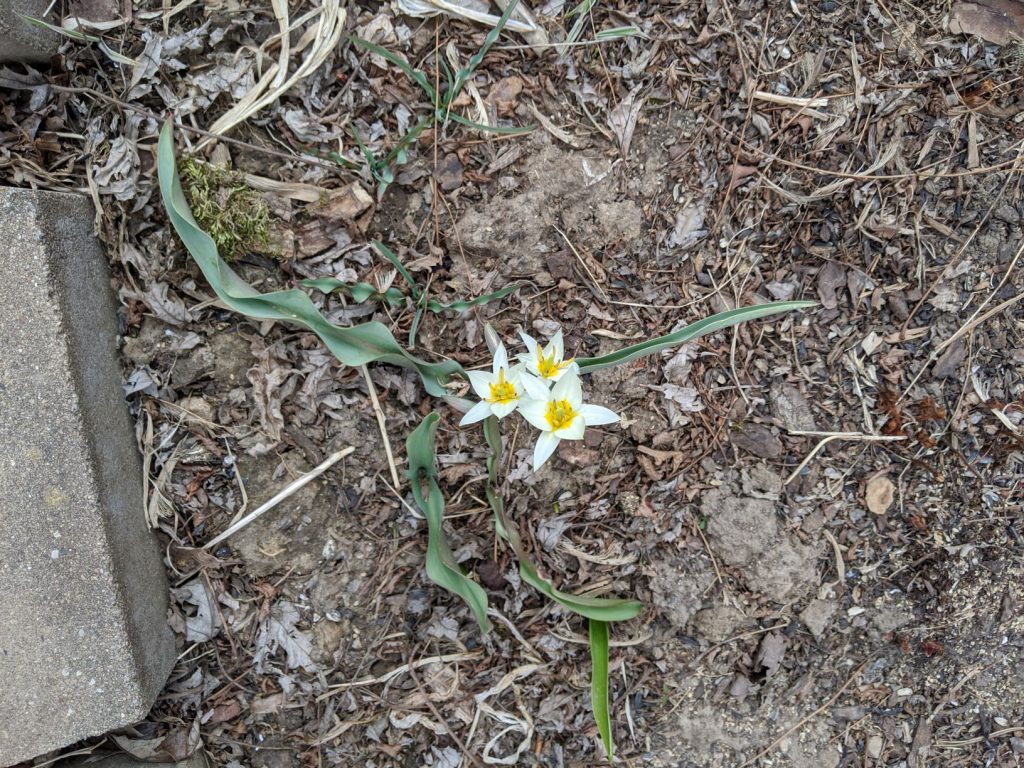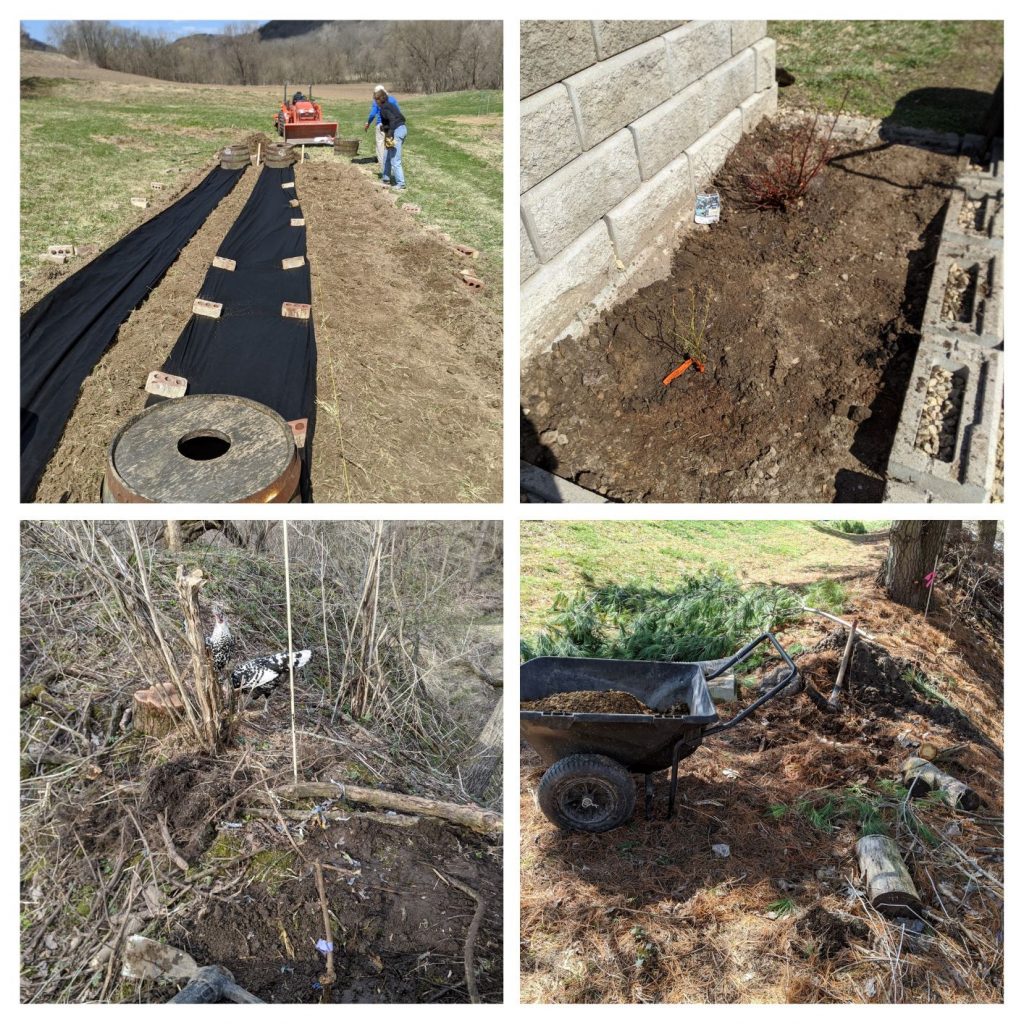We are in the perfect time of year for work outdoors: cool enough to not get very sweaty, no bugs, minimal vegetation in the way, yet still surprisingly dry. Firstly, I would like to share with you just how wonderfully the rain garden I built at the top of the new trail is doing:
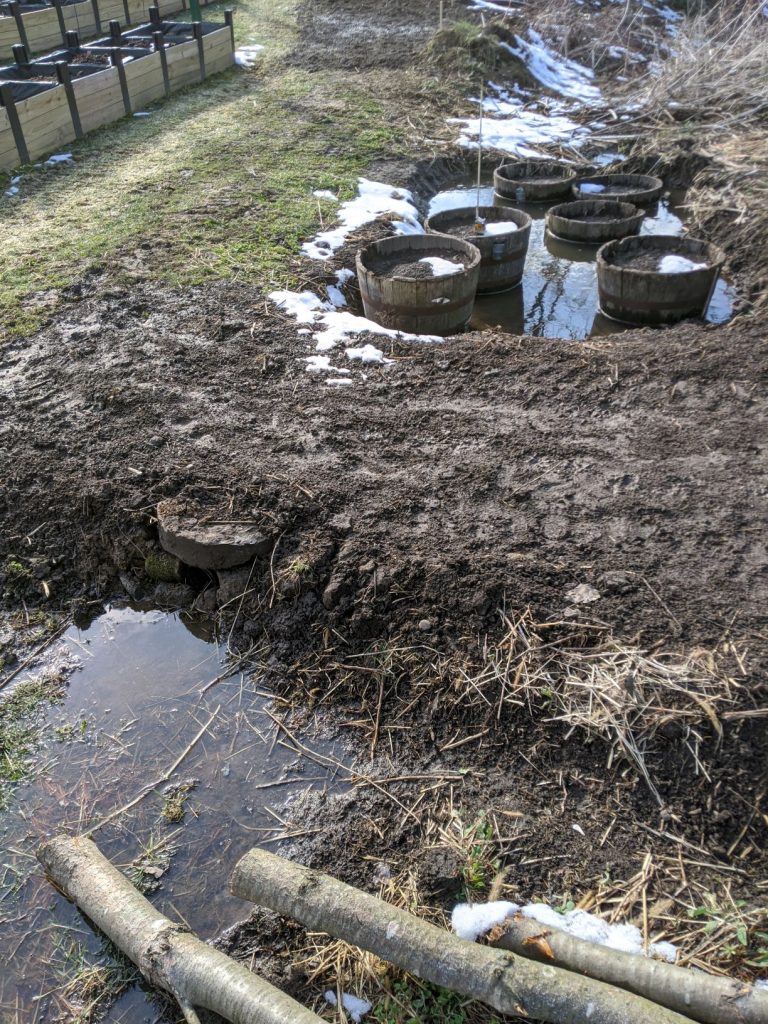
My main work has been dealing with my two Fedco Tree orders that arrived this last week:
468A – ‘Tristis’ Niobe Weeping Willow Willows (1) 3 x $15.00 = $45.00
585A – ‘Johns’ Elderberries (1) 1 x $18.00 = $18.00
21A – Calville Blanc d’Hiver Apples (1) 1 x $30.25 = $30.25
406A – St Cloud Highbush Blueberries (1) 1 x $14.50 = $14.50
449A – American Hazelnut Seedling Hazelnut (1) 2 x $16.00 = $32.00
469A – American Linden Linden (1) 1 x $16.00 = $16.00
584A – ‘Goodbarn’ Elderberries (1) 1 x $18.00 = $18.00
592A – ‘Korsor’ Elderberries (1) 1 x $18.00 = $18.00
L885A – Red Boskoop Apple Scionwood (1) 1 x $5.00 = $5.00 (grafted earlier onto existing rootstock)
I transformed the unused cuttings bed (it suffered when dad destroyed the irrigation misting system for it accidentally) into a blueberry patch using an existing blueberry bush along with the new arrival. As dad’s hops operation also requires acidic soil, I am fairly hopefully that they will receive frequent acidification.
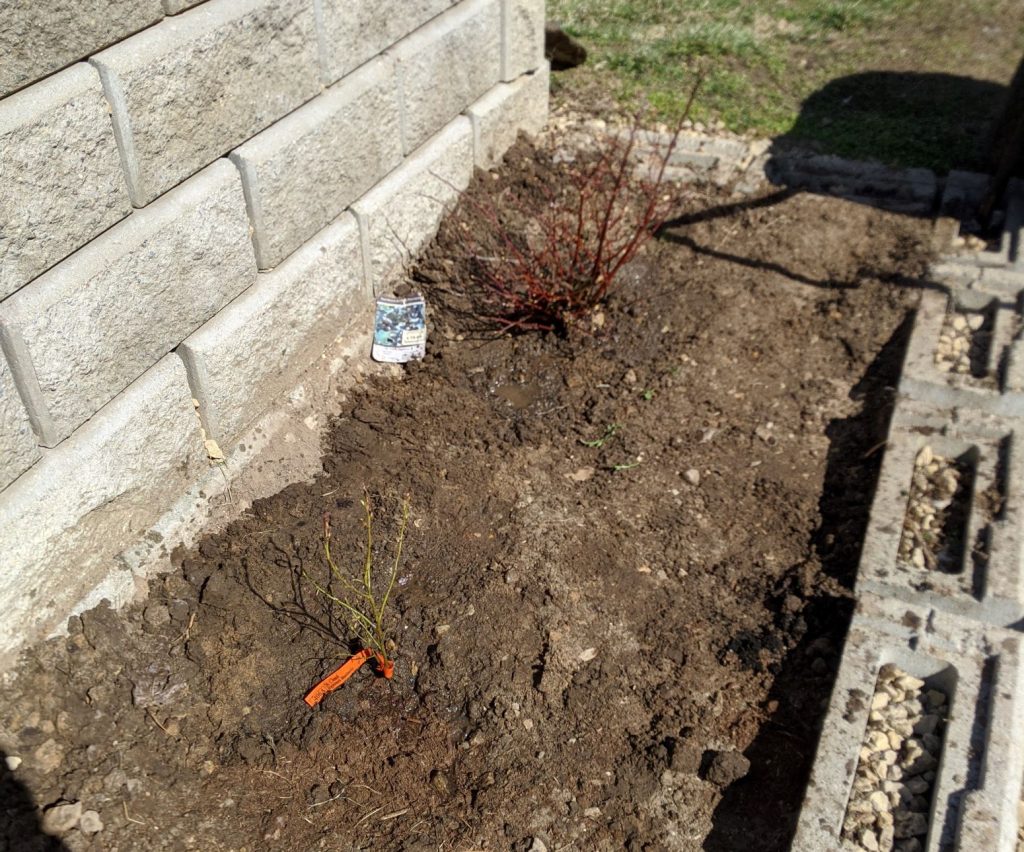
It took far longer to figure out where to put the other trees than to actually plant them. All together it was an all day operation. The apple, of course, was planted into the apple orchard. The linden tree (originally intended for by the barn) got planted on the far western end of the property down by the two existing lindens and the culvert. The elderberries are one of my most exciting acquisitions, and they were planted on the berm and along the trail into the ravine.
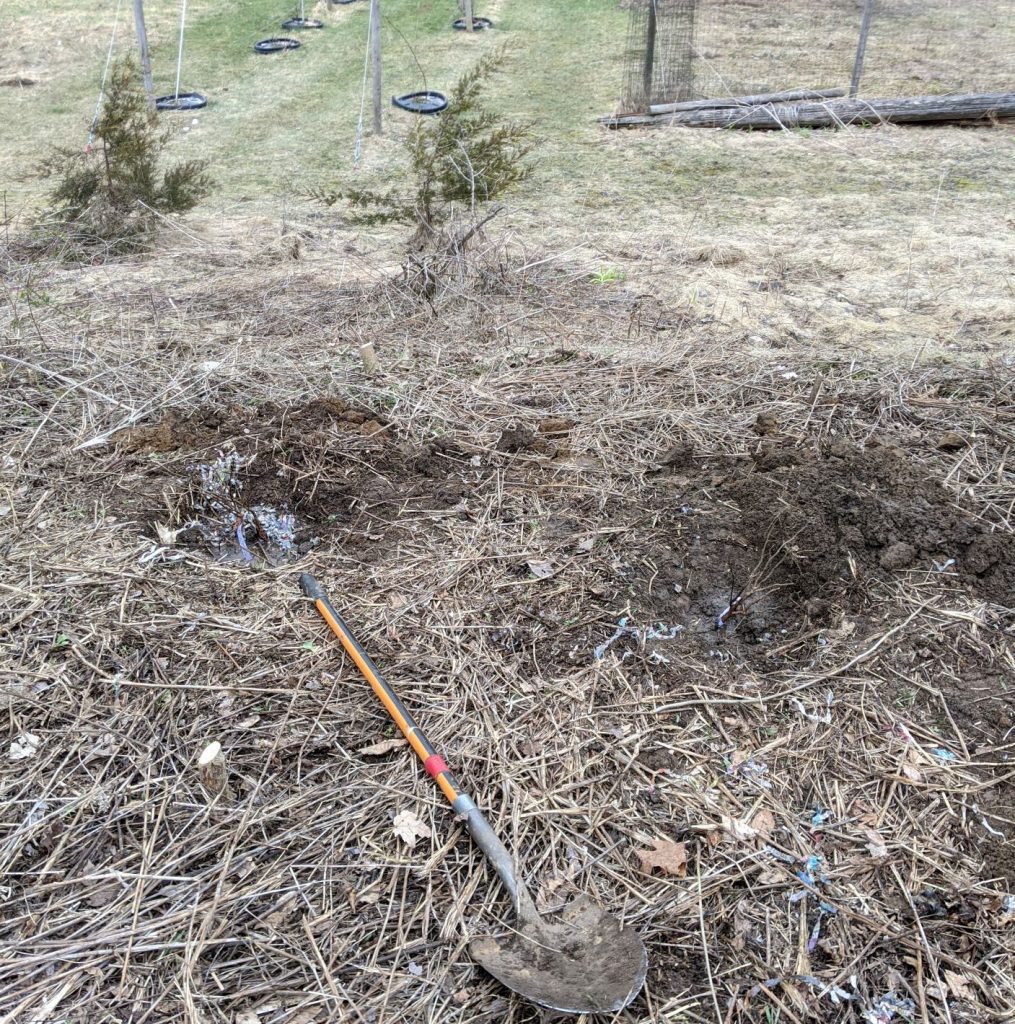
The elderberries were originally purchased to be put along the road and western field to start creating a proper hedge out of the scraggly scrub-filled mass that exists there in places. I decided the elderberries deserved better, and also had some concerns about the low lying power lines there. However I did continue to place the hazelnuts there, hacking through existing wild shrubberies to place the two hazelnuts up just south of the grapes and the barn garden.
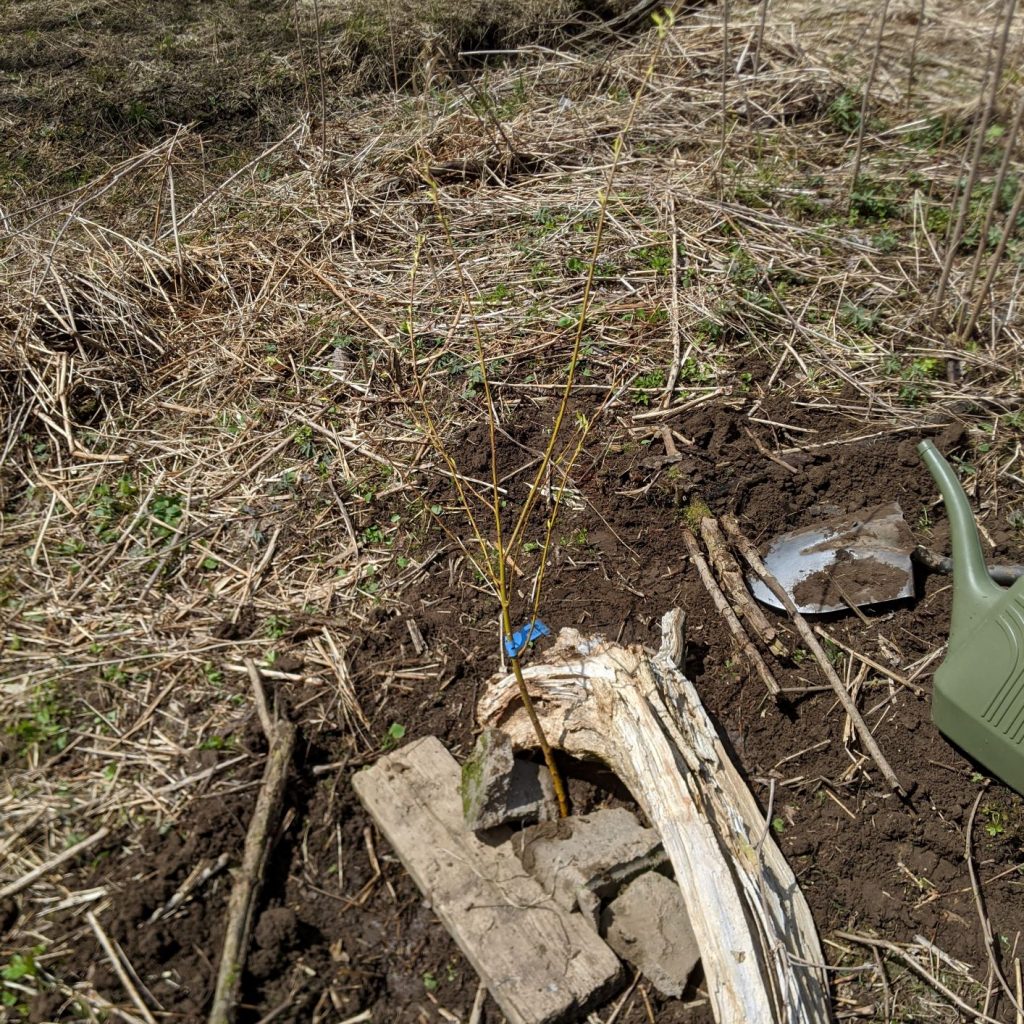
The weeping willows were an inspired impulse purchase after seeing some lovely weeping willows in New Zealand. These weeping willows are Salix alba, the white willow, not to be confused with the more common Peking weeping willow found in warmer climates. I got them as interesting specimens which can be pollinator friendly. Most importantly, I got them because willows’ extensive root systems are good for stabilizing stream banks. Thus I have planted two in the ravine along the stream bed, and one at the top of the ravine near the septic system to eventually replace a walnut that is there nearby.
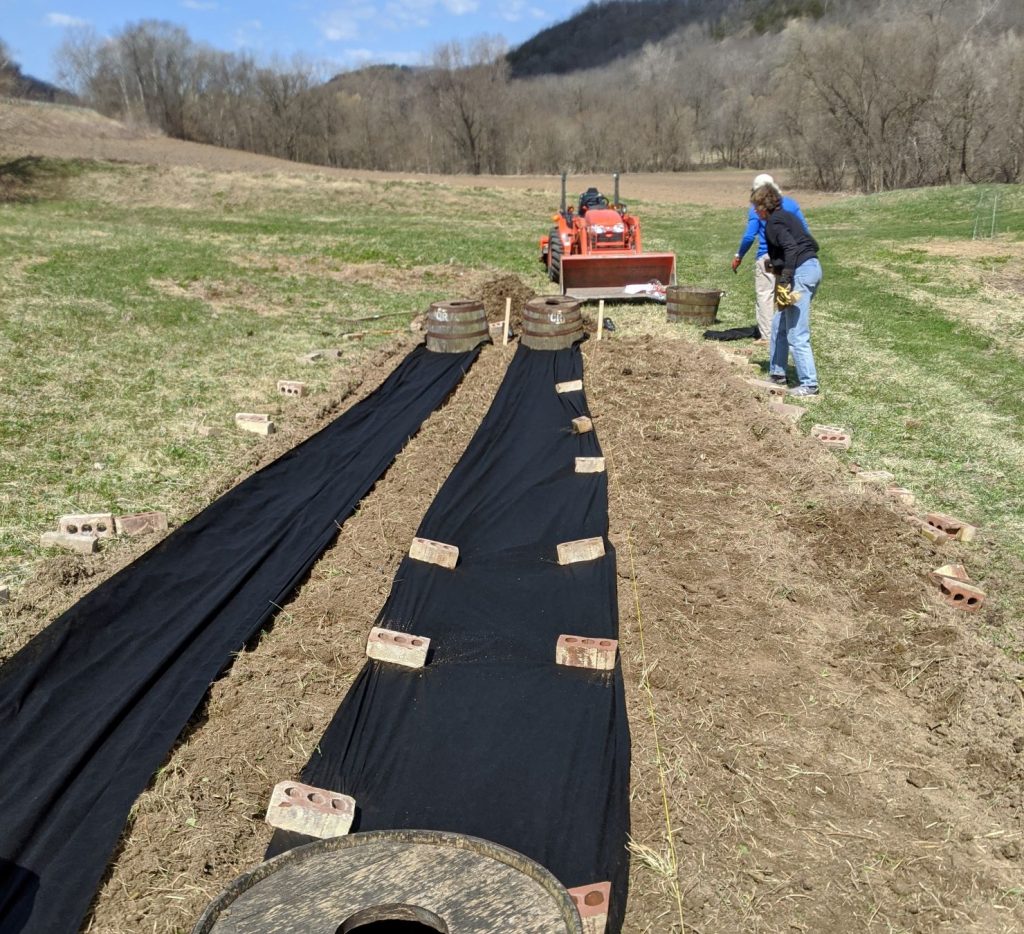
In other planting news, the parents have revived my former ‘far garden’ which lies at the end of the property near the earlier mentioned linden planting. It’s a rather random garden in the middle of a field, but at the bottom of the slope it is moist and fertile. The parents planted a fairly large crop of potatoes. Yukon Gold, picked up at the local Gertens. I also threw in some Big Max pumpkins to grow among them.
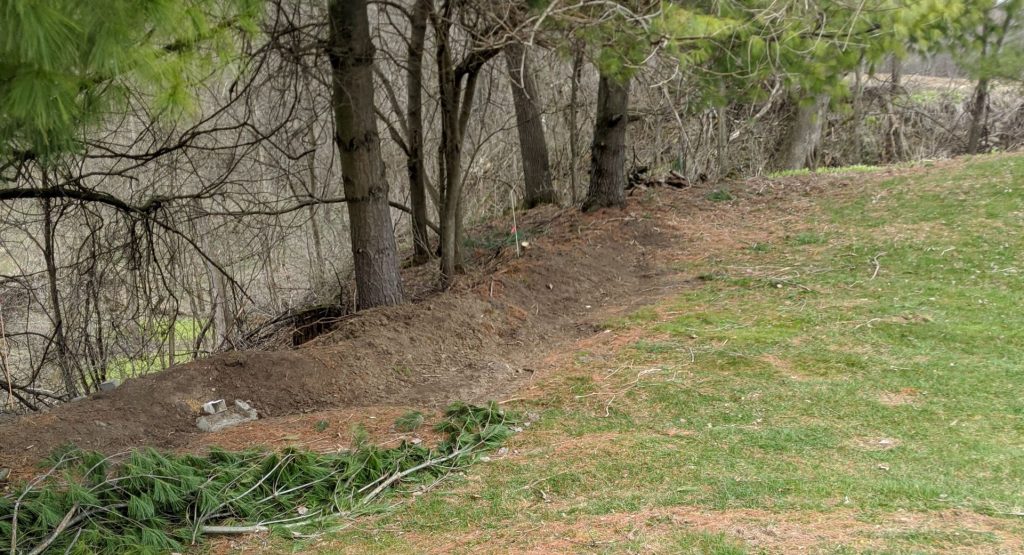
While other erosion control work is bigger and handles a lot more water, the lack of embankment by the septic system near the house is just as dangerous. The berm along the pine trees there had disappeared, I think during construction work for the house, and erosion was beginning to eat open crevasses in the ground. I dumped some more dirt there and a small drainpipe. Following some work with a McLeod while listening to the Wheel of Time Book 11, I had a new berm which shall hopefully be sufficient for holding that section of the ravine back.
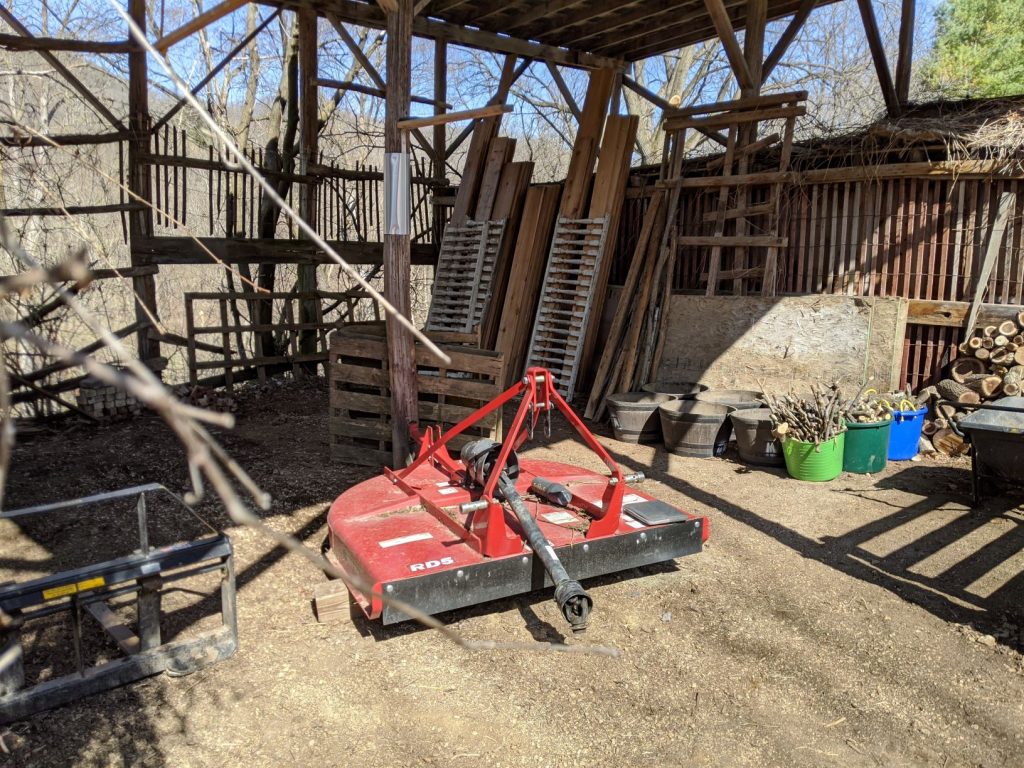
Perhaps the biggest accomplishment is the clearing up of the hayshed. This building, or really just a roof held up by 12 aging telephone poles, is surprisingly useful for some purposes. One enclosed part has become the new chicken coop following the removal of an old tractor and cultivator. The more open part has also been cleared up following the removal of kayaks and a trailer Steve was storing there as well. The wood pile has been moved from the enclosed side to the more open side.
